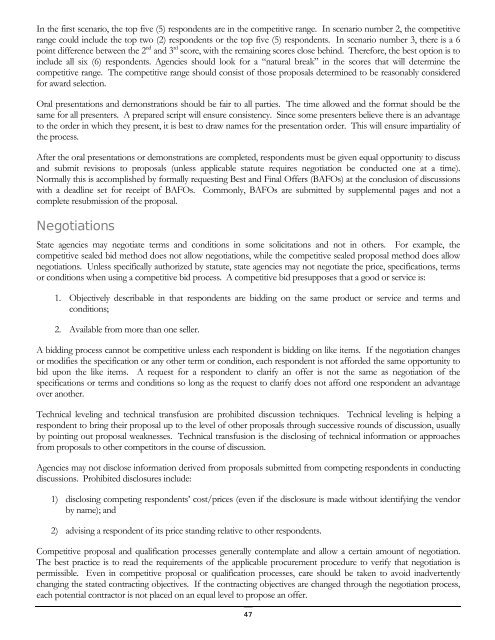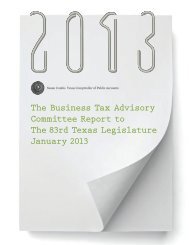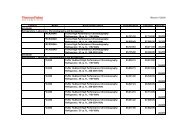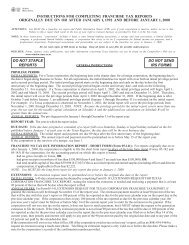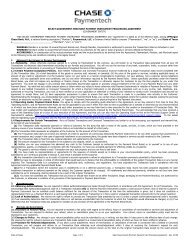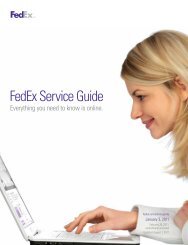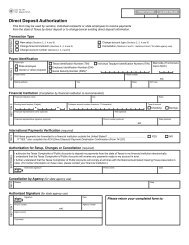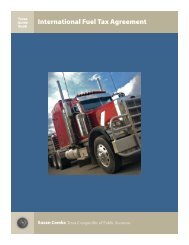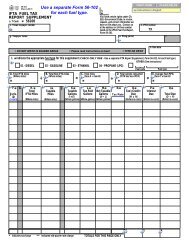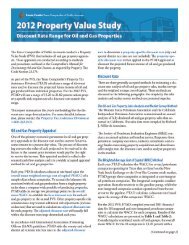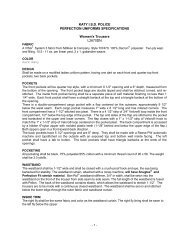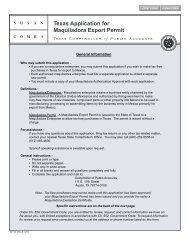Contracts Management Guide - Texas Comptroller of Public Accounts
Contracts Management Guide - Texas Comptroller of Public Accounts
Contracts Management Guide - Texas Comptroller of Public Accounts
You also want an ePaper? Increase the reach of your titles
YUMPU automatically turns print PDFs into web optimized ePapers that Google loves.
In the first scenario, the top five (5) respondents are in the competitive range. In scenario number 2, the competitive<br />
range could include the top two (2) respondents or the top five (5) respondents. In scenario number 3, there is a 6<br />
point difference between the 2 nd and 3 rd score, with the remaining scores close behind. Therefore, the best option is to<br />
include all six (6) respondents. Agencies should look for a “natural break” in the scores that will determine the<br />
competitive range. The competitive range should consist <strong>of</strong> those proposals determined to be reasonably considered<br />
for award selection.<br />
Oral presentations and demonstrations should be fair to all parties. The time allowed and the format should be the<br />
same for all presenters. A prepared script will ensure consistency. Since some presenters believe there is an advantage<br />
to the order in which they present, it is best to draw names for the presentation order. This will ensure impartiality <strong>of</strong><br />
the process.<br />
After the oral presentations or demonstrations are completed, respondents must be given equal opportunity to discuss<br />
and submit revisions to proposals (unless applicable statute requires negotiation be conducted one at a time).<br />
Normally this is accomplished by formally requesting Best and Final Offers (BAFOs) at the conclusion <strong>of</strong> discussions<br />
with a deadline set for receipt <strong>of</strong> BAFOs. Commonly, BAFOs are submitted by supplemental pages and not a<br />
complete resubmission <strong>of</strong> the proposal.<br />
Negotiations<br />
State agencies may negotiate terms and conditions in some solicitations and not in others. For example, the<br />
competitive sealed bid method does not allow negotiations, while the competitive sealed proposal method does allow<br />
negotiations. Unless specifically authorized by statute, state agencies may not negotiate the price, specifications, terms<br />
or conditions when using a competitive bid process. A competitive bid presupposes that a good or service is:<br />
1. Objectively describable in that respondents are bidding on the same product or service and terms and<br />
conditions;<br />
2. Available from more than one seller.<br />
A bidding process cannot be competitive unless each respondent is bidding on like items. If the negotiation changes<br />
or modifies the specification or any other term or condition, each respondent is not afforded the same opportunity to<br />
bid upon the like items. A request for a respondent to clarify an <strong>of</strong>fer is not the same as negotiation <strong>of</strong> the<br />
specifications or terms and conditions so long as the request to clarify does not afford one respondent an advantage<br />
over another.<br />
Technical leveling and technical transfusion are prohibited discussion techniques. Technical leveling is helping a<br />
respondent to bring their proposal up to the level <strong>of</strong> other proposals through successive rounds <strong>of</strong> discussion, usually<br />
by pointing out proposal weaknesses. Technical transfusion is the disclosing <strong>of</strong> technical information or approaches<br />
from proposals to other competitors in the course <strong>of</strong> discussion.<br />
Agencies may not disclose information derived from proposals submitted from competing respondents in conducting<br />
discussions. Prohibited disclosures include:<br />
1) disclosing competing respondents’ cost/prices (even if the disclosure is made without identifying the vendor<br />
by name); and<br />
2) advising a respondent <strong>of</strong> its price standing relative to other respondents.<br />
Competitive proposal and qualification processes generally contemplate and allow a certain amount <strong>of</strong> negotiation.<br />
The best practice is to read the requirements <strong>of</strong> the applicable procurement procedure to verify that negotiation is<br />
permissible. Even in competitive proposal or qualification processes, care should be taken to avoid inadvertently<br />
changing the stated contracting objectives. If the contracting objectives are changed through the negotiation process,<br />
each potential contractor is not placed on an equal level to propose an <strong>of</strong>fer.<br />
47


